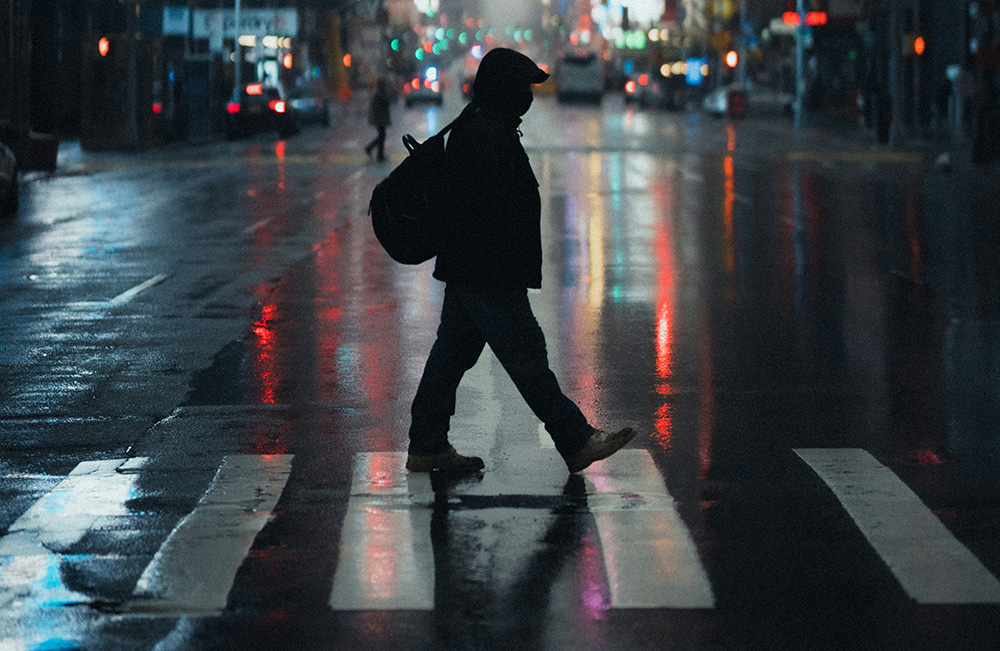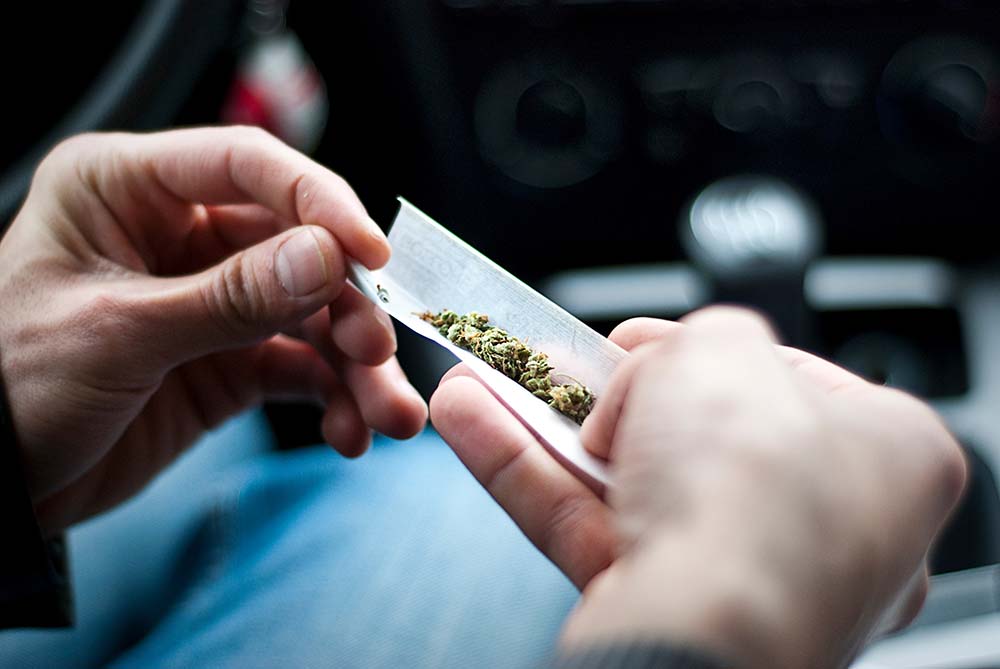
There has been an evident increase in accidents involving pedestrians in recent years, and these incidents often result in serious injuries. The Governors Highway Safety Association recently found that pedestrian fatalities reached a 41-year high of more than 7,500 in 2023, including 62 people killed in Connecticut. One has to think that the rise in distracted driving has played a major factor in this increase.
Pedestrians can receive compensation through insurance or workers’ compensation claims after an accident, but they are often insufficient to cover the full costs inflicted by an accident. Hiring a personal injury attorney can help you get fair compensation from both the insurance companies and those responsible for your injuries.
Causes of accidents involving pedestrians
Pedestrians can be injured in many unexpected ways, including slipping and falling on an unsafe sidewalk, falling materials at a construction site, or a collision with a bicyclist, scooter, or skateboarder. Pedestrians have even filed claims against other pedestrians who ran into them while distracted.
For this article, we’re focusing on motor vehicle accidents, which are the most common type of accident involving pedestrians and the most likely to cause serious injuries. Accidents can occur when:
- A vehicle hits a pedestrian crossing the street, either in a marked crosswalk or outside of one
- A vehicle goes around a turn and strikes a pedestrian
- One driver stops for a pedestrian, who is then struck by a driver going around them or passing in a separate lane
- A pedestrian walks in front of a vehicle as it is backing up
- A driver’s vision is blocked by hedges, walls, street signs or other obstructions
- A pedestrian is struck in a parking lot
- A driver does not see a pedestrian due to low visibility conditions, such as darkness or fog
- A driver loses control, leaves the roadway, and strikes a pedestrian
- Distracted driving
In some cases, a third party may share some of the blame or even be primarily responsible for the accident. This can occur when issues like poor road design, inadequate signage, or faulty vehicle parts contribute to an accident.
Finding evidence to support your claim
To prevail in a personal injury claim, a plaintiff has to put together strong evidence to uphold their version of events and show that a defendant’s actions were negligent. There are several pieces of evidence that can be used in a claim, including:
- A police report: Includes helpful information such as witness statements, measurements, photographs, dashcam video and a preliminary assessment of fault.
- Witness statements: Help corroborate your version of events. Ideally as close to the accident as possible, when they have a strong recollection of the accident.
- Medical records: Show the mechanism of injury in pedestrian cases through a diagnosis of your injuries, the treatments necessary for your recovery, and the costs you have paid for medical care.
- Photographs: Document the accident scene, including pictures of injuries, damage to the vehicle involved, and other relevant features such as road conditions and signs.
- Video footage: Captures footage of the accident or a driver’s actions before the accident, as well as at the scene after an accident. Video evidence can include surveillance footage from nearby homes and businesses as well as dashcam footage from law enforcement.
- Experts: Expert witnesses can include accident reconstruction specialists, investigators, civil engineers, code experts, and others. In addition, forensic accountants determine the impact of the accident on a plaintiff’s earning capacity.
- Driver record: Can strengthen claims of driver negligence by highlighting past traffic violations.
- Cell phone records: Can help prove that a driver was distracted at the time of the accident.
Negligence factors
Motorists have a duty of care to drive safely and follow traffic laws for their safety as well as the safety of anyone else using the road. If a driver behaves irresponsibly and this behavior causes them to hit a pedestrian, they can be found negligent and held liable for a pedestrian’s injuries. Examples of driver negligence include:
- Failing to yield: Drivers in Connecticut must yield to pedestrians in a crosswalk, and for safety reasons they must also give way to anyone crossing the street — even if not in a crosswalk. A recent Connecticut law also states that drivers must yield to pedestrians who make a visible signal that they are about to cross the street.
- Speeding: Drivers who are traveling at an unsafe speed are less capable of stopping or avoiding pedestrians properly using the roadway.
- Distracted driving: Drivers may not see a pedestrian in time if they are texting, talking on a phone, using an in-vehicle entertainment system, or otherwise distracted.
- Driving under the influence: If a driver is intoxicated, they will be less aware of their surroundings and have a slower reaction time.
- Disobeying traffic signals: Drivers may collide with a pedestrian if they go through a red light or stop sign
- Reckless driving: Any driver behavior that is aggressive or unsafe can cause them to collide with a pedestrian
Compensatory and punitive damages
Pedestrians who are injured by a negligent driver can seek compensatory damages. Depending on the circumstances of the accident, they may also be able to seek punitive damages.
Compensatory damages take into account both economic and non-economic losses resulting from the accident. Economic losses cover things like medical bills, lost wages, and personal property damaged or destroyed in the accident. The court may also determine that the plaintiff is entitled to additional damages for indirect, non-economic losses such as pain and suffering or the loss of enjoyment of life.
Punitive damages may be awarded in claims where the defendant’s behavior is reckless. These damages are meant to punish the defendant for their actions and deter similar behavior in the future.
In motor vehicle accidents where a pedestrian is injured, punitive damages may be awarded for particularly egregious conduct, such as when a driver intentionally hits a pedestrian, flees the scene after the accident, or hits a pedestrian while street racing, or drives distracted.
What if I was partially at fault?
Pedestrians also have a duty of care when using a sidewalk or roadway and are expected to act in a safe, predictable manner. In some circumstances, it may be determined that a pedestrian’s behavior contributed to the accident, including:
- Jaywalking, walking against a “Don’t Walk” signal, or failing to use a crosswalk
- Not following the rules of the road, including expectations that pedestrians will use a sidewalk when available, walk on the left side of the road, and yield to emergency vehicles with flashing lights or sirens.
- Acting in a way that a driver cannot anticipate, such as darting in front of a vehicle or entering the street from between two vehicles
- Walking while distracted, intoxicated, or under the influence of drugs
- Walking in a prohibited area, such as on the shoulder of a freeway
- Failing to take proper precautions when walking at night, such as wearing reflective clothing or carrying a flashlight.
Connecticut has a modified comparative negligence statute, which can hold a plaintiff partially responsible in an accident and reduce their compensation accordingly. However, it is still possible to recover damages as long as the court finds that you weren’t more than 50 percent responsible for the accident.
Let’s review your case
If you or a loved one were injured in a pedestrian accident, call Anderson Trial Lawyers at 860.886.8845. We’ll set up a free consultation to discuss your case and the intricacies of pursuing a claim when injured as a pedestrian.

Though medical marijuana has been legal in Connecticut since 2012, recreational marijuana use has only been permitted for a short period. The state legislature legalized the drug for recreational use in 2021, and retail marijuana sales started earlier this year.
This decision has ramifications for personal injury claims following a motor vehicle accident. Now that recreational marijuana possession, use, and sales are legal in Connecticut, police departments have expressed their concern that there might be an increase in impaired driving in the state. This, in turn, could lead to more crashes caused by drivers under the influence of marijuana.
State law clearly says that drugged driving is a type of driving under the influence, and drivers who cause a crash while high are subject to the same penalties as drivers who cause crashes while under the influence of alcohol. If you have been involved in a crash where marijuana was a factor, the skilled attorneys at Anderson Trial Lawyers can get you the settlement or verdict you deserve.
Marijuana’s effect on drivers
Marijuana use affects a driver’s cognitive functions, making it more difficult for them to operate a motor vehicle. The drug can impair a driver’s motor function, reaction time, tracking ability, and peripheral vision; it can also impede their decision-making abilities, judgment, and impulse control.
In short, marijuana makes a driver less capable of the complex process of operating a motor vehicle, less able to respond to road conditions, and more likely to make poor decisions or lose focus on driving. All of these factors increase the chances of a driver under the influence of marijuana being involved in an accident — especially if they have been using the drug together with other intoxicants such as alcohol.
Unfortunately, while the negative effects of alcohol use on driving ability are well-known and publicized, drivers are generally less aware of the impairment caused by marijuana. This is worsened by a common misconception that it’s safe to drive after using marijuana (or at least not as dangerous as driving drunk); some drivers even mistakenly believe their driving ability is improved when they’re high.
Connecticut’s DUI law
Connecticut’s law regarding driving under the influence is not limited to alcohol. The law states that a DUI offense is committed when driving under the influence of intoxicating liquor or any drug or both. This could be alcohol, marijuana, or cold medicine.
This means that drivers who operate a motor vehicle under the influence of marijuana are subject to the same criminal penalties as those who drive drunk, including the possibility of a license suspension, fines, or jail. They are also subject to liability in civil court, mainly through personal injury lawsuits.
Determining fault
Proving that a driver was under the influence of marijuana at the time of an accident is more challenging than proving that they were under the influence of alcohol. While a blood-alcohol test provides a relatively simple and reliable way to determine if a driver is impaired at the time of operation, there is no comparable test to determine if a driver is impaired by marijuana.
The effects of THC, the psychoactive compound in marijuana, vary considerably from person to person. Someone with low levels of THC may be considerably impaired, while someone with high levels may show minimal signs of impairment. And since THC lingers in the bloodstream, someone can test positive for the compound well after any intoxicating effects have worn off. In sum, there is really no scientific method to connect the amount of THC in a driver’s bloodstream to impaired driving. Therefore, other factors must be investigated and preserved at the time of the crash.
The police report may include observations suggesting that the driver appeared to be high shortly after the crash, such as red eyes and sleepiness. Other witnesses may be able to show that the driver exhibited poor judgment consistent with being under the influence of marijuana. Physical evidence can also point to the effects of marijuana impairment, such as shorter skid marks indicating a slow reaction time.
The presence of marijuana in another driver’s vehicle doesn’t necessarily indicate that they were high at the time of the crash, since Connecticut law permits the possession and transportation of marijuana in a vehicle. However, marijuana can only be kept in the glove compartment or trunk when in a vehicle; if it was found in a more accessible location, this could help establish that they were using the drug during or shortly before the accident.
The consequences of a DUI accident
Just like a crash caused by a drunk driver, an accident caused by marijuana impairment can have serious consequences — including the possibility of wrongful death.
If you are injured by a driver who was under the influence of marijuana, we can help ensure that you receive compensation proportional to your losses. We work with medical professionals and economists to help quantify the financial impact of the accident on your life, including medical expenses, lost wages, and diminished quality of life.
If you or a loved one were involved in an accident you believe was caused by a driver operating under the influence, contact the attorneys at Anderson Trial Lawyers for a free consultation. Call us at 860-886-8845 or contact us online.







